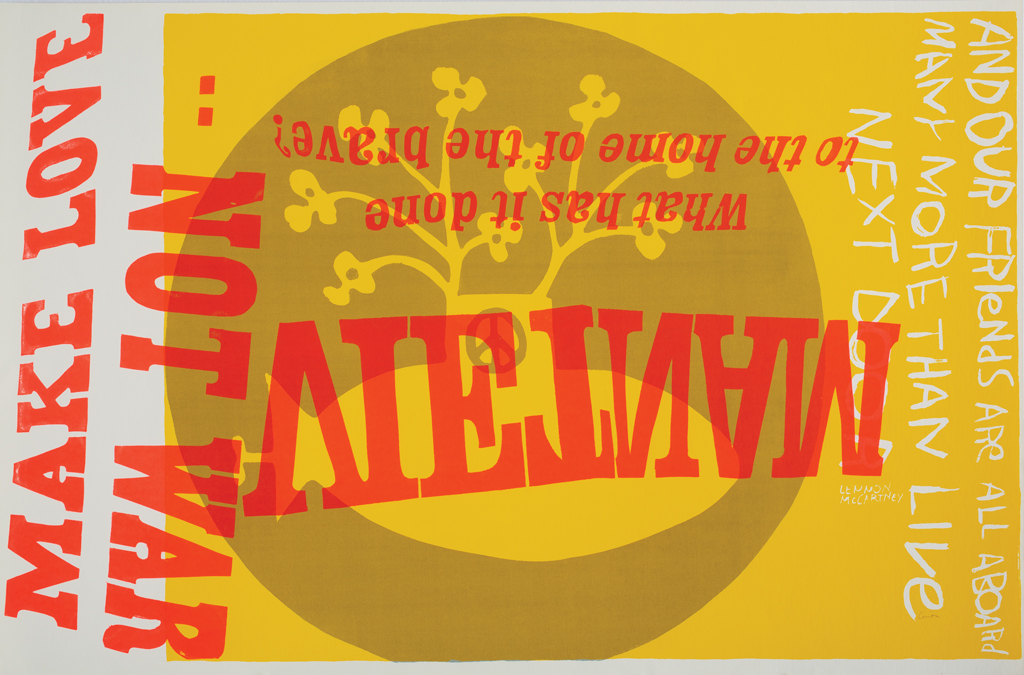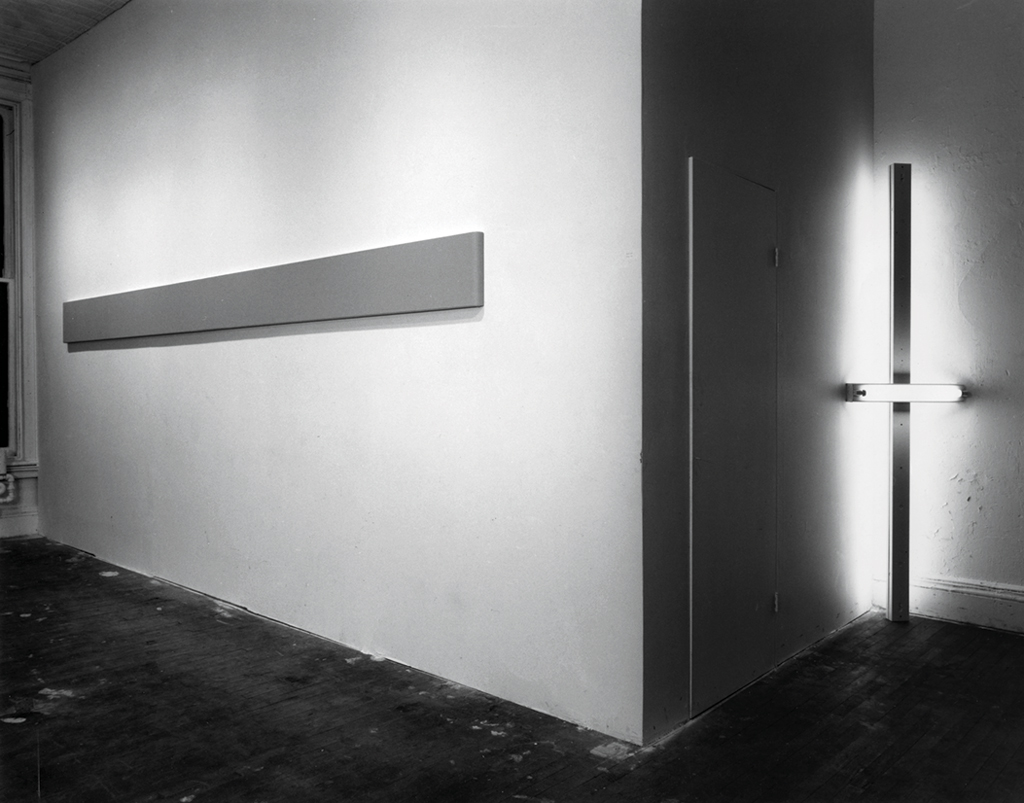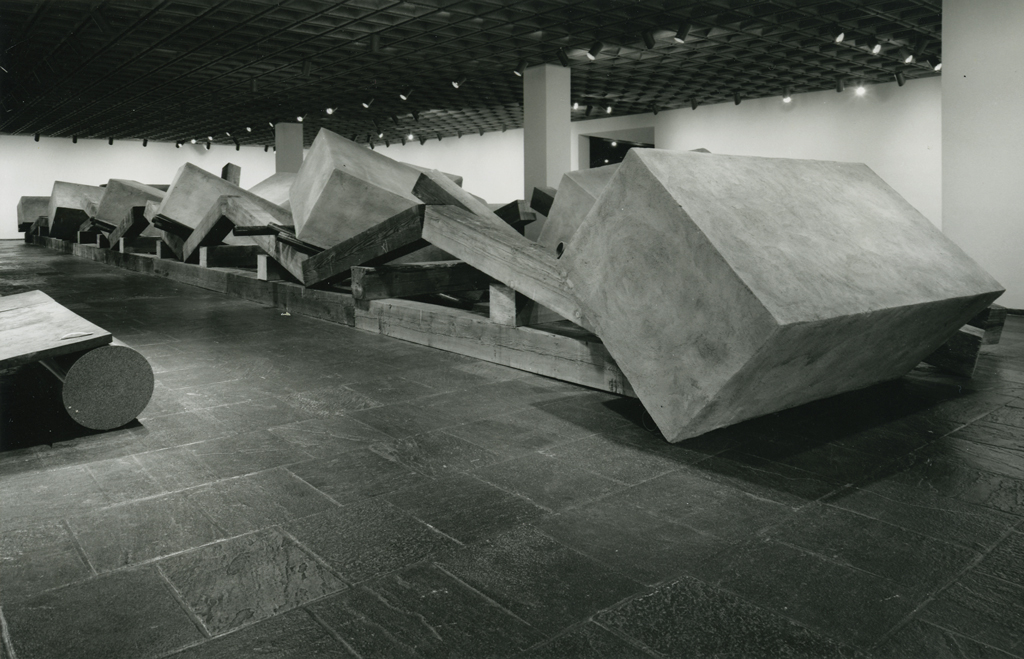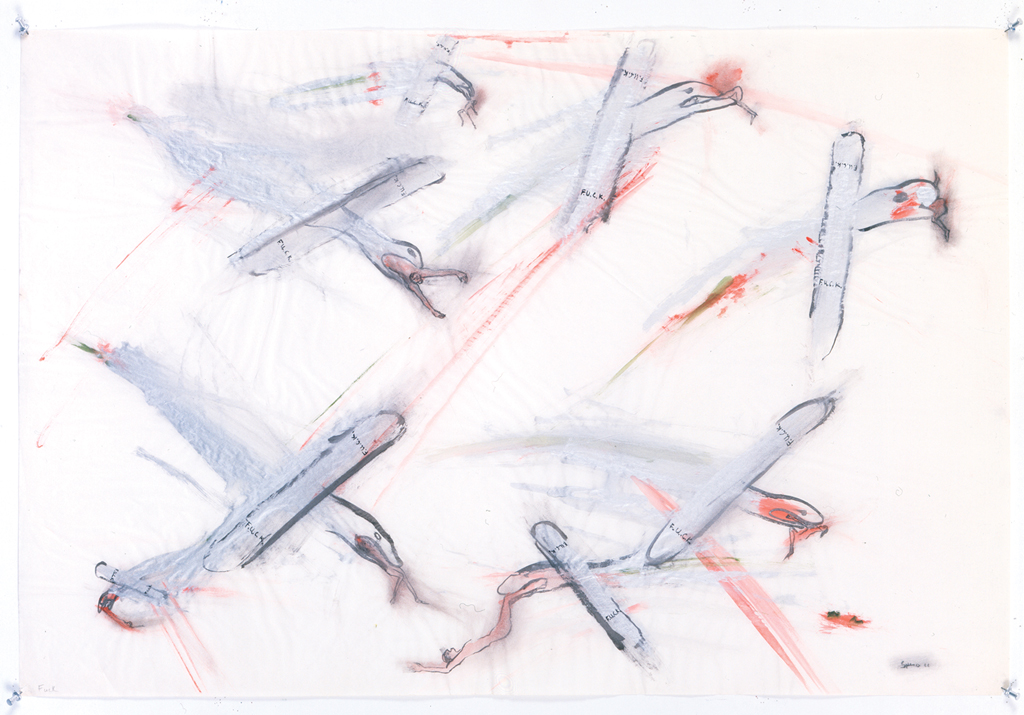[ad_1]

Corita Kent, yellow submarine, 1967.
ARTHUR EVANS/©CORITA ART CENTER, IMMACULATE HEART COMMUNITY, LOS ANGELES
In the early 1970s, the Art Workers’ Coalition approached ARTnews and three other art publications with a proposal to run an anti–Vietnam War poster on the cover of a future issue. The designated poster featured an image of the My Lai massacre. At the time, ARTnews ran only images of artworks on its cover, and so rejected the proposal, as did the other magazines, but the gesture was an important one. The war had radicalized artists across the United States and beyond; many protested at art museums, while others merged their politics with their work. With the exhibition “Artists Respond: American Art and the Vietnam War, 1965–1975” on view at the Smithsonian American Art Museum in Washington, D.C., we returned to our archives and pulled out articles about artists and that war.
April 1966
In an extraordinary collective effort, Los Angeles artists with their colleagues in New York, Paris, Rome and points east and west joined to produce a Tower flanked by walls of pictures that dramatize their stand against the American war effort in Viet-Nam. On a plot rented at the corner of La Cienega (Los Angeles street of art galleries) and legendary Sunset Boulevard, with money advanced from painters Robert Rauschenberg and William Copley, local artists led by Irving Petlin arranged for sculptor Mark di Suvero to erect a soaring 60-foot pylon. From the meetings and activities which produced the event, West Coast critic Philip Leider (who was also active in the groups which collaborated on the scheme) properly deduces that a watershed has been reached between the apolitical art worlds of the 1950s and the energetic social consciousness of today. . . . Many of the East Coast contributors to the Tower . . . have been actively associated with liberal causes—Civil Rights, Ban-the-Bomb, anti-Capital Punishment, etc.: Elaine de Kooning, Ad Reinhardt, Esteban Vicente, Jack Levine, Robert Motherwell, et al. Indeed, the New York scene never was quite as disengaged from politics as might be surmised from rereading its exhibition catalogues and reports on round-tables.
—“Los Angeles: Tower for Peace”

Installation view of “Benefit for the Student Mobilization Committee to End the War in Vietnam,” 1968, at Paula Cooper Gallery, 96 Prince Street.
COURTESY PAULA COOPER GALLERY, NEW YORK
December 1968
Paula Cooper/96 Prince was the scene of an unexpectedly handsome small benefit exhibition for the Student Mobilization Committee to End the War in Vietnam, timed to coincide with various world-wide peace demonstrations in late October. Fourteen New York non-objective artists were represented with one work each, and the intention was to express political commitment through the contribution of major pieces to be sold. This was an intelligent premise and perhaps also a long overdue one, after a spate of shows of unevenly convincing “protest” works from artists who, however serious about the ideal, have not found visual propaganda to be their bag. In addition to the more tangible benefits of a benefit, the idea of peace was served by an extraordinary aura of pellucid tranquility. . . . Outstanding were the pieces by Flavin, Bollinger, Judd, David Lee, Baer; other participants in the show were Andre, Barry, Huot, Insley, LeWitt, Mangold, Murray, Ohlson and Ryman.
—“Reviews and Previews,” by Elizabeth C. Baker
September 1970
Late this spring, as the world awoke to the invasion of Cambodia and shootings in Ohio, Georgia and Mississippi, the climate of fury and desperation made possible a massive coming together of ordinarily isolated individuals—artists, writers, dealers, historians, curators, students as well as numerous less identifiable but equally agitated members of the New York art world—all intent on formulating some conspicuous art-action of protest. . . .
The idea of an art strike—a closing of all exhibitions—was controversial from the start. Many anti-war artists were against what seemed to be the silencing of their own medium of communication. Some were having shows which they did not care to shut down. Others resented injudiciously applied pressures. But the idea gained momentum. . . . Robert Morris dismantled his own sculpture show, which had two of its seven weeks still to run at the Whitney Museum. A statement was issued by Morris on May 15 “to underscore the need I and others feel to shift priorities at this time from art making and viewing to unified action within the art community against the intensifying conditions of repression, war and racism in this country.”
—“Pickets on Parnassus,” by Elizabeth C. Baker

Installation view of “Robert Morris,” 1970, at the Whitney Museum, New York.
SUSAN HOROWITZ
January 1983
[Maya Lin’s Vietnam War] memorial’s “modifications”—a flagpole and a realistic sculpture of three infantrymen, which were not in the original design—will be added near the memorial’s entrance. Like so much about the Vietnam War, the memorial and its additions became the sources of controversy—and finally of a compromise that would not have been seen as likely in the days during the war.
What had happened? Lin’s proposal followed the guidelines set forth by the Vietnam Veterans Memorial committee, which included the stipulations that “the emphasis is to be on those who died,” that the memorial be “without political or military content,” and that it include the “suitable display of the names of the 57,692 Americans who died in Vietnam.” The jury that chose Lin was made up primarily of architects, landscape designers and artists. Charles Atherton, an architect and secretary of the Federal Fine Arts Commission, which rules on the building of new structures on federal land, says that the commission was particularly pleased with the jury’s choice of a design that had “great respect for the environment.” Lin used no vertical lines, nothing to “disturb” the integrity of the location, an area roughly between the Lincoln and Washington monuments.
—“Vietnam War Memorial”
February 1985
[Leon Golub’s “Vietnam” works] are the protest paintings he insisted his “Gigantomachies” were not. Utilizing news photos and military handbooks, he painted not only actual bodies and faces but uniforms, guns and in one case an armored car. Like the “Gigantomachies,” these canvases hang unstretched; the big difference is that Golub began cutting away chunks of canvas—to add, he has said, to the rawness and the brutality of what he was depicting. . . .The choice of subject resulted in a flattening too: gone are the psychological ambiguities of his earlier classicized paintings. No doubt here who the victims and the victimizers are.
—“Leon Golub’s Mean Streets,” by Gerald Marzorati

Nancy Spero, Fuck, 1966.
©THE NANCY SPERO AND LEON GOLUB FOUNDATION FOR THE ARTS, LICENSED BY VAGA AT ARTISTS RIGHTS SOCIETY (ARS), NY/COURTESY GALERIE LELONG & CO.
June 2009
In 1965, the height of the Vietnam War, [Nancy] Spero . . . abandoned oil painting to work on her “War Series”—furious ink and gouache drawings on paper that articulated the obscenity of war. She sexualized its violence with images of phallic helicopters and bombs spewing fire and blood, and she introduced the image that would epitomize her entire oeuvre: the phallicized tongue, the same tongue that gives voice to both Spero and the silent female protagonists that populate human history—and her work.
—“Spero’s Heroes,” by Phoebe Hoban
Summer 2014
[Dinh Q. Lê’s] new works . . . intermix strips cut [from] photos of both the Vietnam War and recent conflicts with images from Hollywood films and documentaries, blend history and memory, atrocity and nostalgia, fixation and amnesia. At the same time, these barely decipherable woven images bear witness to the other side of the American War, as it is called in Vietnam. . . . The 150-foot-long C-print [The Scroll of Thich Quang Duc (2013)] turns a digitally stretched image of a Buddhist monk who has publicly immolated himself into a river of flame that flows off the wall and ripples across the gallery floor.
—“Reviews: New York,” by Kim Levin

Dinh Q. Lê, The Scroll of Thich Quang Duc (detail), 2013.
COURTESY THE ARTIST AND P.P.O.W GALLERY, NEW YORK
February 9, 2018
[Danh] Vo’s retrospective at the Guggenheim in New York . . . is wry and sinister and unflinching in its examination of the lives wrecked by American militarism, colonialism, and politics . . . As the United States drifts toward a new period of reckoning, it is essential viewing. . . . The actual black typewriter that Ted Kaczynski, the Unabomber, used to type his manifestos sits on the floor of one gallery. Lit from behind in a wall is a letter from Robert McNamara accepting President-elect Kennedy’s offer to become Secretary of Defense, setting the stage for him to become the architect of the U.S.’s involvement in Vietnam. The wooden skeleton of a chair once used by Kennedy cabinet members stands alone along a wall.
—“Touch of Evil: Danh Vo’s Guggenheim Show Is a Masterful,
Timely Examination of Recent History,” by Andrew Russeth
A version of this story originally appeared in the Spring 2019 issue of ARTnews on page 111 under the title “The War Comes Home.”
[ad_2]
Source link

